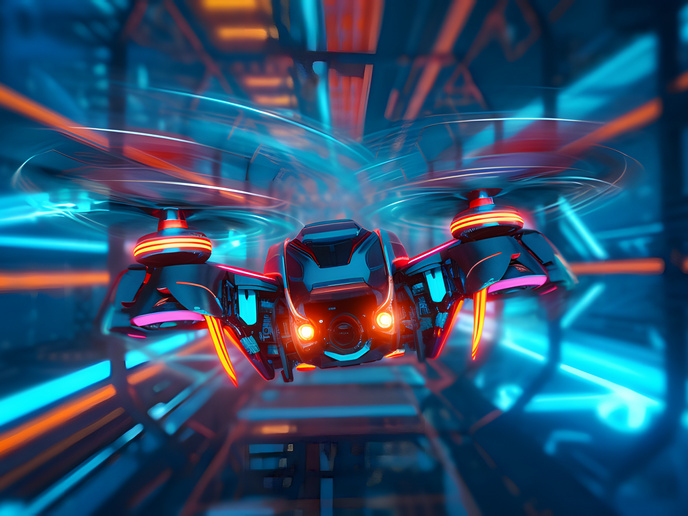AI flies drone like a champ
Researchers supported by the EU-funded AGILEFLIGHT project developed the first autonomous system capable of beating human pilots in drone racing. Called Swift, the AI system did not best just any human competitors, but rather three world-class pilots: the 2019 Drone Racing League champion Alex Vanover, the 2019 MultiGP Drone Racing champion Thomas Bitmatta and three-time Swiss champion Marvin Schaepper. In races held between 5 and 13 June 2022, Swift won multiple times against the three champions in a sport known as first-person view drone racing. The competitors all had to pilot their high-speed drones through an obstacle course at speeds exceeding 100 km per hour. The drones were controlled remotely through headsets linked to an onboard camera that provided the pilots with a first-person view from the drone’s perspective. The races took place on a specially designed track in a hangar at Dübendorf Airport near Zurich. The track covered a 25x25 m area and consisted of seven square gates that the drones had to pass in the right order to complete a lap. As reported in a news item on the website of AGILEFLIGHT project coordinator University of Zurich, the race required challenging manoeuvres such as a “Split-S”, which is “an acrobatic feature that involves half-rolling the drone and executing a descending half-loop at full speed.”
Faster, but less adaptable
Swift managed to beat the human champions several times, and it even achieved the fastest lap, completing the course a half-second faster than the best human-controlled lap. However, human pilots were better able to adapt in conditions that differed from those the AI system was trained for, for example, if there was too much light in the room. This shows that although AI has made amazing progress in navigating physical environments, human pilots still have an advantage when it comes to adapting to variable conditions. As described in a paper published in the journal ‘Nature’, these results were achieved using deep reinforcement learning, whereby Swift taught itself to fly by trial and error in a simulated environment. “To make sure that the consequences of actions in the simulator were as close as possible to the ones in the real world, we designed a method to optimize the simulator with real data,” explains lead author Dr Elia Kaufmann of the University of Zurich in the news item. So, how does Swift work? The AI system uses real-time data gathered by the onboard camera, as well as measurements such as acceleration and speed from other sensors. This data is processed using an artificial neural network to localise the drone in space and identify race gates along the course. A control unit, also based on a deep neural network, then uses this information to choose the best way to finish the circuit as fast as possible. Study senior author Prof. Davide Scaramuzza, from the same university, explains why speed is important: “Drones have a limited battery capacity; they need most of their energy just to stay airborne. Thus, by flying faster we increase their utility.” The new technology developed with support from AGILEFLIGHT (Low-latency Perception and Action for Agile Vision-based Flight) has several real-world applications according to the researchers. These include forest monitoring, space exploration, and search and rescue missions, where drones need to cover large areas in a short space of time. For more information, please see: AGILEFLIGHT project
Keywords
AGILEFLIGHT, drone, AI, drone racing, Swift, deep reinforcement learning, neural network



